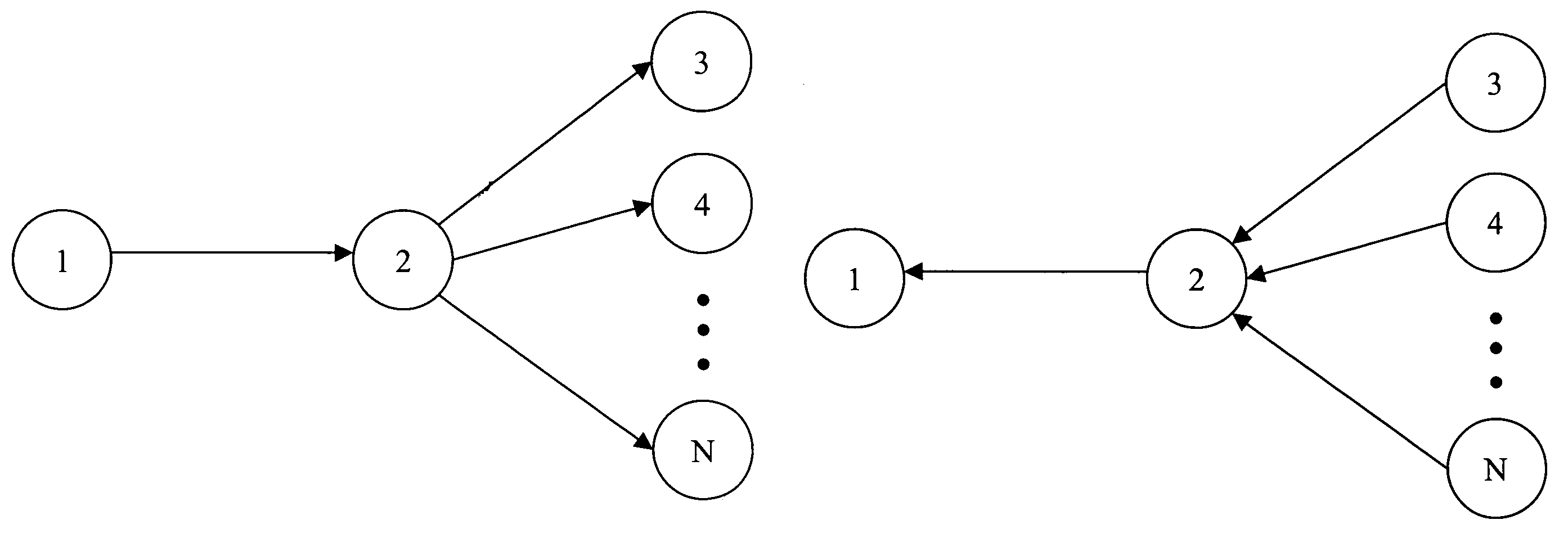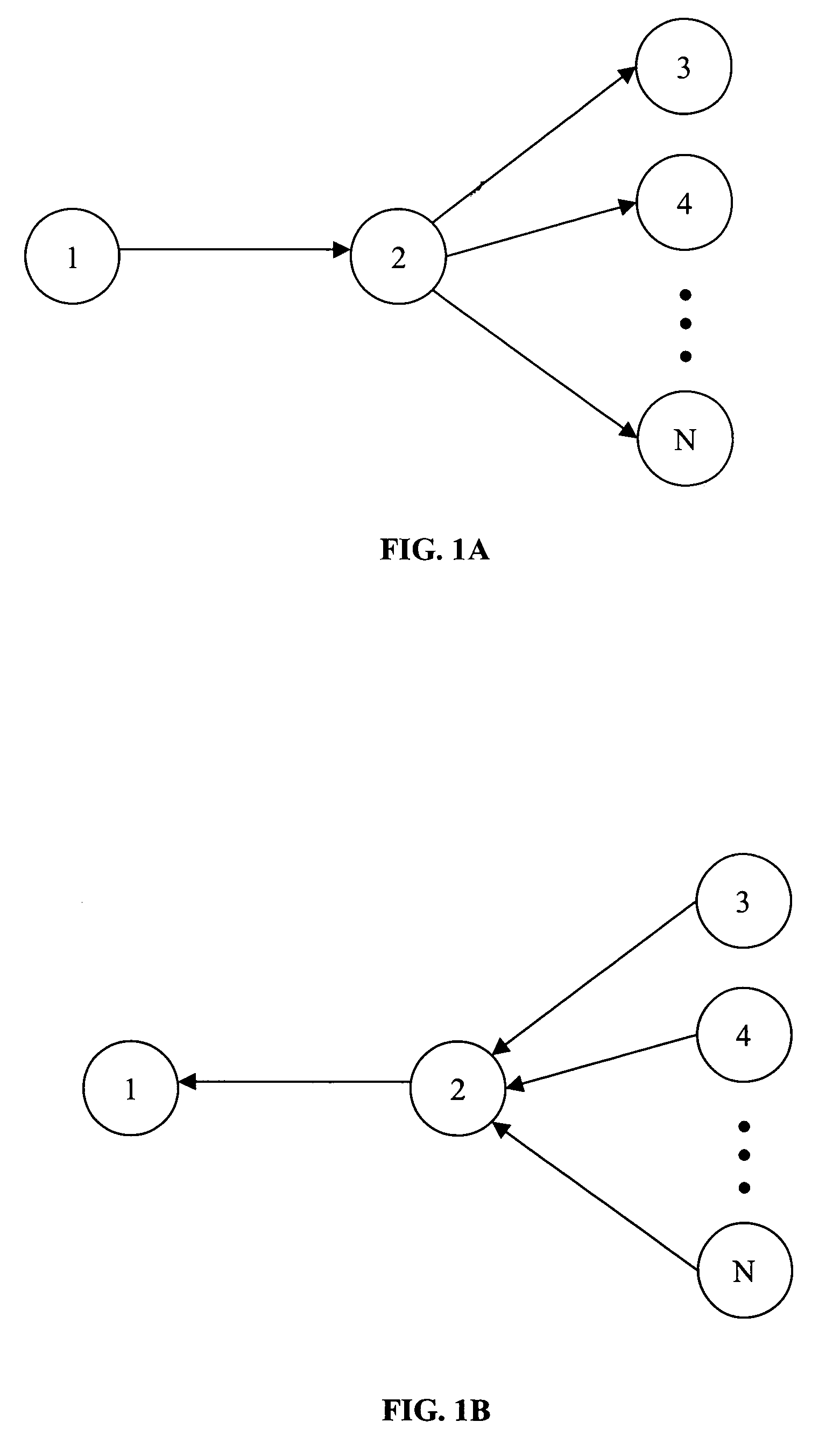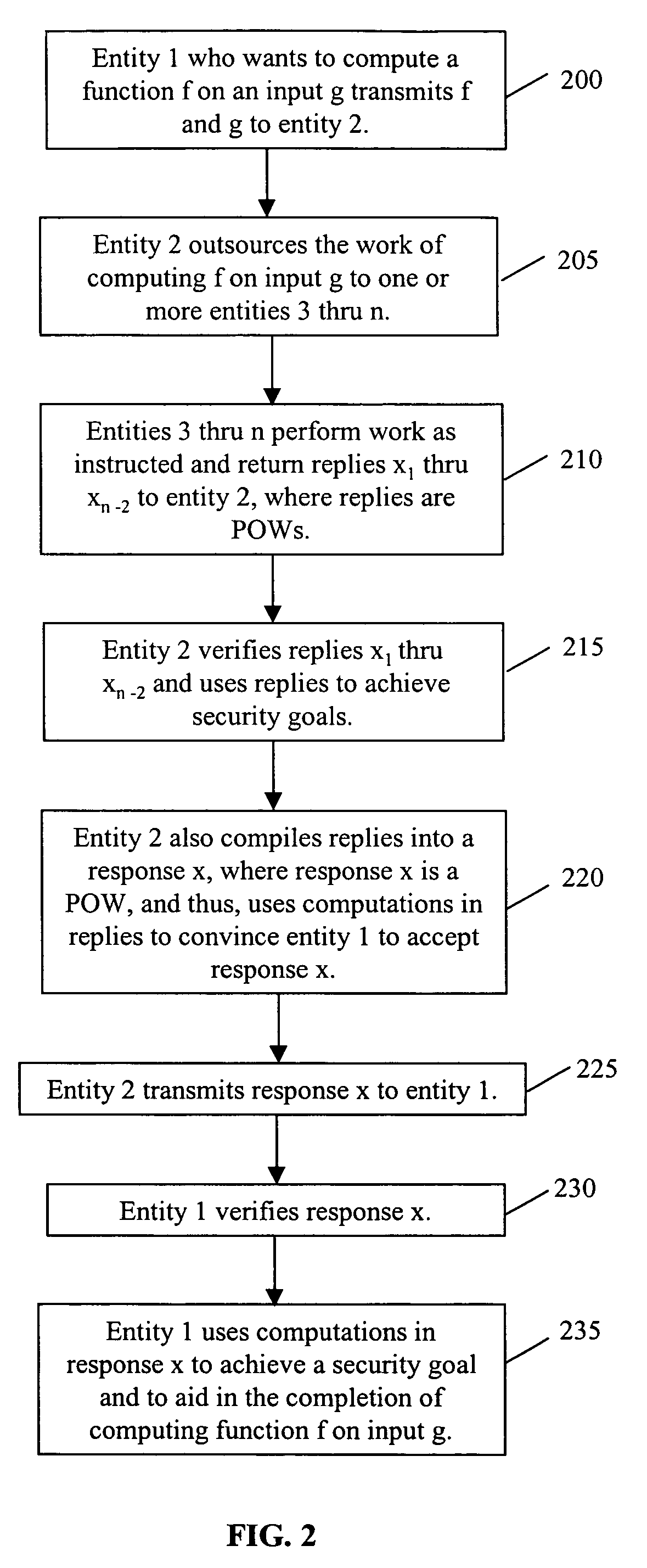Proofs of work and bread pudding protocols
a bread pudding protocol and proof of work technology, applied in the field of proofs of work, can solve the problems of imposing a significant computational load in excess of that associated with many conventional cryptographic protocols, and achieve the effects of reducing waste, novel minting approach, and maintaining privacy in operation
- Summary
- Abstract
- Description
- Claims
- Application Information
AI Technical Summary
Benefits of technology
Problems solved by technology
Method used
Image
Examples
Embodiment Construction
[0013]FIGS. 1A and 1B illustrate an exemplary architecture for practicing an illustrative embodiment of the bread pudding protocol of the present invention. As shown in FIGS. 1A and 1B, the architecture comprises entities 1, 2 and 3 through n (all of which may be servers). Although entity 1 is illustrated in FIGS. 1A and 1B as being distinct from entity 2, in an alternate embodiment, entities 1 and 2 may be the same entity. To begin, with reference to FIG. 1A, entity 1 has a computational task to perform. In furtherance of that task, entity 1 instructs entity 2 to perform some computational work related to the task. Entity 2 will then out-source the work related to the task to each of entities 3 through n. Outsourcing may be accomplished by dividing the work into components and assigning each entity 3 through n a different component. As shown in FIG. 1B, as each entity 3 through n completes its component of work, each entity will respond with its reply. Each of the replies is a POW ...
PUM
 Login to View More
Login to View More Abstract
Description
Claims
Application Information
 Login to View More
Login to View More - R&D
- Intellectual Property
- Life Sciences
- Materials
- Tech Scout
- Unparalleled Data Quality
- Higher Quality Content
- 60% Fewer Hallucinations
Browse by: Latest US Patents, China's latest patents, Technical Efficacy Thesaurus, Application Domain, Technology Topic, Popular Technical Reports.
© 2025 PatSnap. All rights reserved.Legal|Privacy policy|Modern Slavery Act Transparency Statement|Sitemap|About US| Contact US: help@patsnap.com



